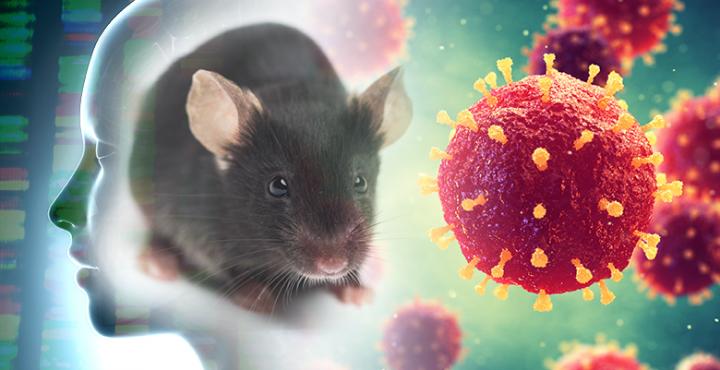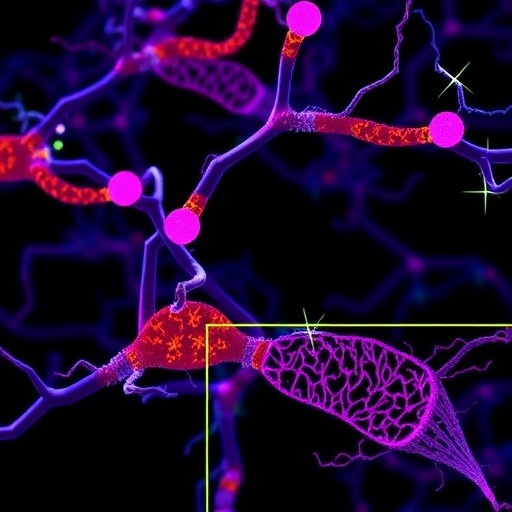New resource that categorises genes essential for supporting life could be used to identify rare disease mutations

Credit: Spencer Phillips EMBL-EBI
31 January 2020, Cambridge – Researchers at EMBL’s European Bioinformatics Institute (EMBL-EBI) and Queen Mary University of London have led a study to categorise which genes are essential for supporting life. The results from this study could be a useful new resource to help researchers identify mutations responsible for rare childhood diseases.
Identifying which genes are linked to a rare disease is one of the most difficult challenges geneticists face. The low prevalence of these diseases within the population makes it difficult to research and fully understand their causes. However, huge advances in the diagnosis of rare diseases are now being made thanks to innovations in sequencing technology.
This research, published in Nature Communications, compares knockout mice viability and phenotyping data from the International Mouse Phenotyping Consortium (IMPC) with human cell lines provided by the Broad Institute’s Project Achilles to create categories indicating how crucial a gene is to producing viable life.
The researchers also identified new mutations likely responsible for rare childhood diseases by comparing their data with unsolved cases of genetic disorders identified in the 100,000 Genomes Project and the Deciphering Developmental Disorders (DDD) datasets.
Defining genes essential for life
“Loss of gene function is often referred to as a binary concept; lethal or viable,” says Violeta Muñoz-Fuentes, Biologist, Mouse Informatics at EMBL-EBI. “In this study we show that gene essentiality is more of a spectrum ranging from cellular lethal, developmental lethal, subviable, viable with a visible phenotype, and viable without a visible phenotype.”
The scientists define these categories for 3819 genes to create an open access database that can be used to benefit other researchers and provide insight for clinical applications.
“When you sequence a person’s genome it’s not always one mutation that stands out as altering a gene’s function,” says Terry Meehan, Coordinator of Mouse Informatics at EMBL-EBI. “We currently don’t have a handle on which genes are important for development and which have a minor impact.”
- Loss of function gene categories
- Cellular lethal: genes essential for cell viability
- Developmental lethal: genes essential for organism development
- Viable: organisms fully develop
- Subviable: organism survival is less than expected
Diagnosing rare disorders
“This study combines multiple sources of data from large scale projects to identify new candidate genes that, when mutated, are likely to have a causal relationship with rare human disorders,” says Pilar Cacheiro, Research Fellow at Queen Mary University of London. “Nearly 6% of the population are affected by these diseases during their lives.”
Advances in whole genome sequencing (WGS) are changing the way we research and diagnose rare genetic diseases. However, the majority of rare disease patients remain undiagnosed due to a lack of detection or because a previously unknown gene is disrupted. This study furthers our understanding of rare disease genes by providing clinicians and researchers with an open access resource, which can be used to identify high-quality candidates for rare disease mutations.
“Of particular interest for application to healthcare, we demonstrate that the set of genes that are essential for organism development is particularly associated with known human developmental disorders,” says Damian Smedley, Reader in Computational Genomics at Queen Mary University of London. “This provides candidates for undiscovered causative genes for these conditions.”
Several high-scoring candidates from this study have been added to the open access resource GeneMatcher, used by researchers and clinicians all over the globe to share gene information. You can also freely access the study data in EMBL-EBI’s Biostudies and at the International Mouse Phenotyping Consortium.
###
Source articles
CACHEIRO, P., et al. (2020). Human and mouse essentiality screens as a resource for disease gene discovery. Nature Communications. Published online 31 01; DOI: 10.1038/s41467-020-14284-2
Media Contact
Vicky Hatch
[email protected]
44-122-349-4410
Original Source
https:/
Related Journal Article
http://dx.




